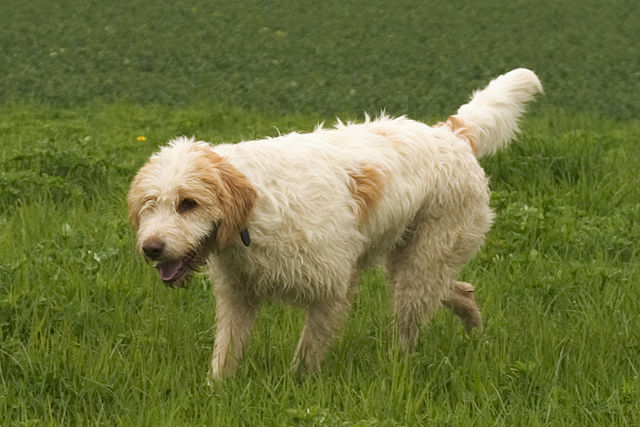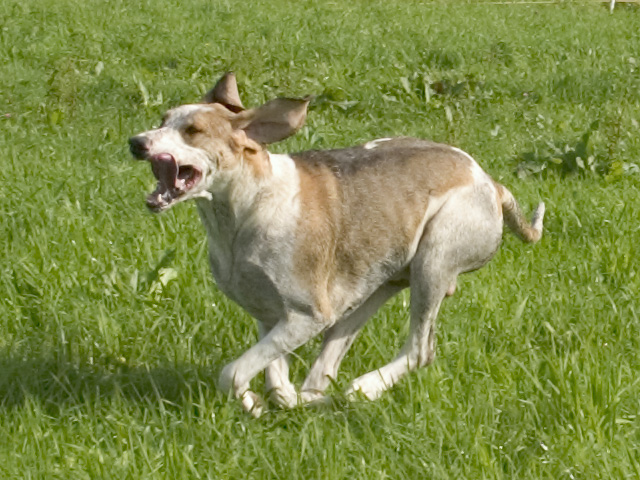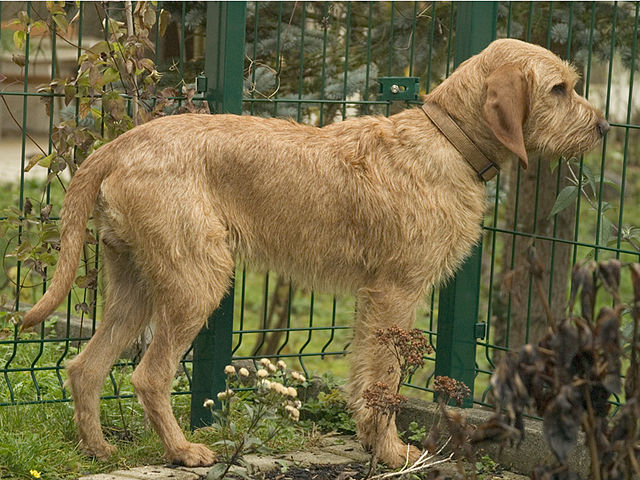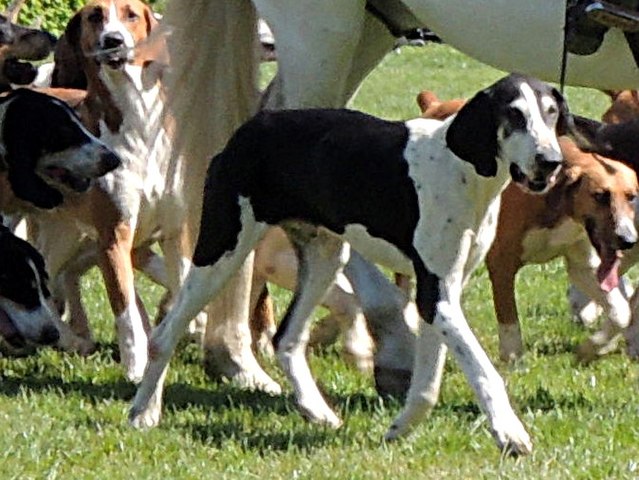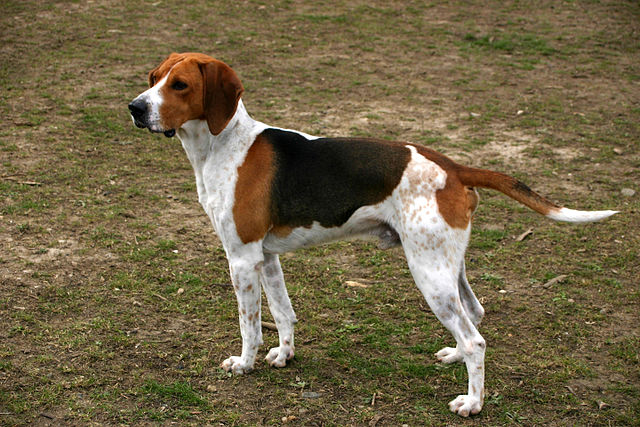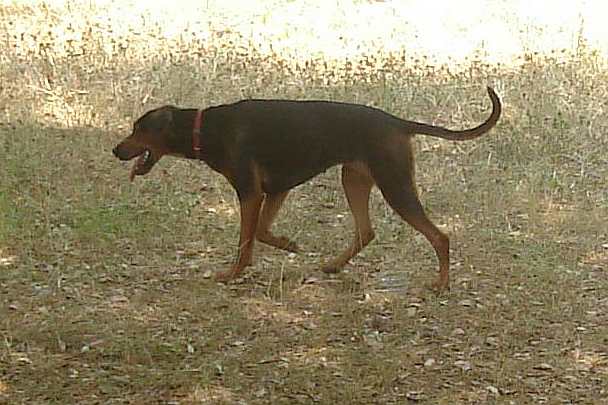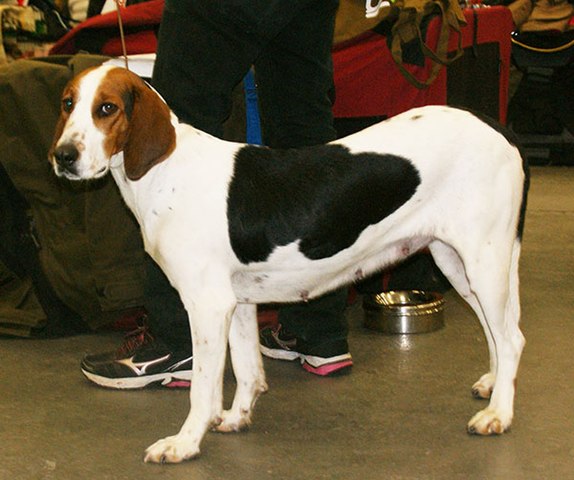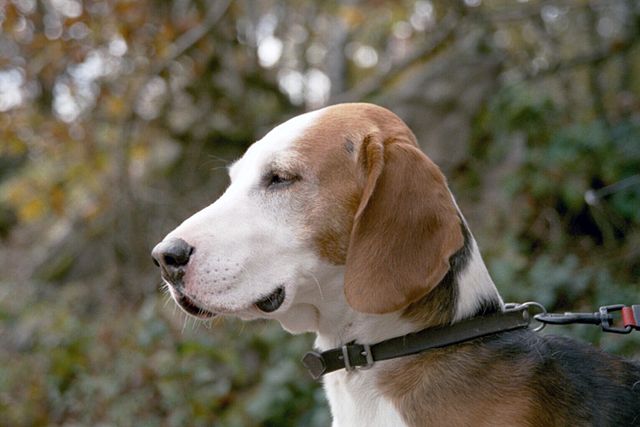The Bosnian Coarse-haired Hound was originally called the Illyrian Hound when it was first recognized by the FCI, but the name was changed in the 1970’s to its current designation. To make matters more confusing it’s also sometimes known as the Barak, the Bosanski Ostrodlaki Gonic, and many other variations of the Bosnian name. Although they are recognized by the UKC in America they are very rarely seen. This hound is also the only Internationally recognized breed in Bosnia. This is a hunting scenthound with a distinctively rough and wiry coat, originally used for hunting large game. The breed is brave, energetic and determined as a hunter with high endurance and a talented nose.
The Bosnian Coarsehair needs plenty of exercise in order to thrive and be happy. Bred to work long hours each day, a simple walk once a day is really not enough. They should only be owned by active families or individuals who can include the hound in vigorous activities like jogging, swimming and fetch games for a bare minimum of 45-60 minutes a day. Along with jogging or similar forms of exercise, keep their minds stimulated by providing them with scent games such as tracking or scentwork! Furthermore they need to live in a home with a fenced yard large enough for them to stretch their legs between formal exercise sessions. Because of their high activity needs, this breed is only recommended for experienced owners. Those who aren’t given enough physical as well as mental exercise can become destructive and excessively loud.
The Bosnian is an intelligent and sensitive dog who can be obedient and polite when trained. He is loyal and devoted to his owner, and enjoys spending time learning when it involves the person he loves! This said, he also has a stubborn streak and can be independent-minded so a trainer must stay consistent and firm. It should be noted that frequent barking is a hallmark of the breed and, while training can reduce this behavior, it’s probably not going to eradicate it completely. As the breed lives an average of 13-15 years, the barking tendencies should be noted before a prospective owner commits to acquiring a puppy! Furthermore remember that this scenthound will want to follow his nose and won’t hesitate to do so in the middle of a training session. An understanding of how to work through these behaviors is essential.
Bosnians make great watchdogs with their deep voices. They’ll bark to alert when people come onto the property, regardless of if the dog is inside the house or out in the yard. In Bosnia, many of these dogs live outdoors because their harsh double coat protects them from the elements and keeps them insulated from the cold. This said, with training they can make fine house pets as well. While they are adept at watchdog duty, they aren’t guard dogs as most are laid-back and friendly with people (assuming they were socialized correctly). Gentle in nature, they get along with children as well as other dogs. Some are even ok living with cats as long as they are socialized to them at an early age!
Bosnian Coarse-haired Hounds are medium-sized dogs with thick pendulous ears on a rectangular head. The body is slightly longer than tall with a deep, wide chest, ending in a proportionately thick tail. Colors include wheaten, reddish, gray or “black-ish” with small white markings. Some dogs have a dark saddle. The medium-long coarse coat is the biggest hallmark of the breed, including the distinctive eyebrows, mustache and beard that combines to give him an unkempt appearance.
Bosnian Coarsehairs are rare outside of their home country however are somewhat well-known in the region of Bosnia and Herzegovina where they were developed. There, most are still used as hunting partners rather than as family pets. It is somewhat surprising, then, to learn that many are quite easy-going in the home and can be easy to live with. With enough exercise they are fully capable of lounging with the family and staying relatively calm.
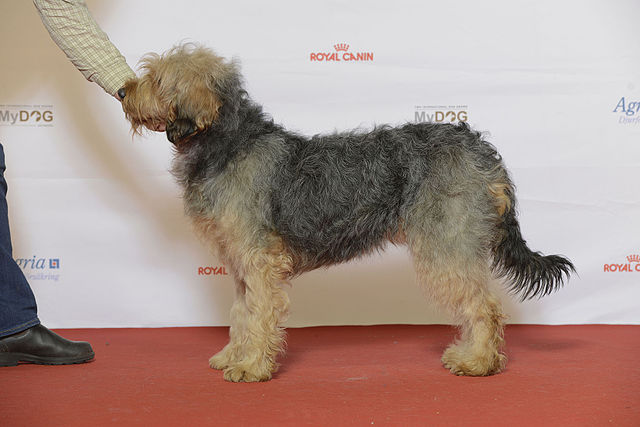
Photo by Sandy

